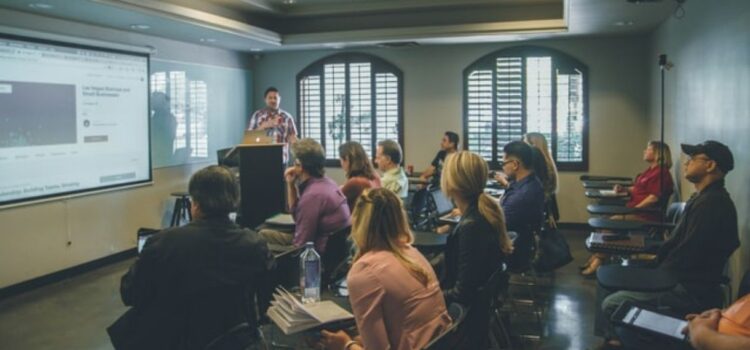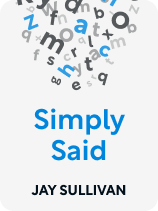

This article is an excerpt from the Shortform book guide to "Simply Said" by Jay Sullivan. Shortform has the world's best summaries and analyses of books you should be reading.
Like this article? Sign up for a free trial here .
What makes an effective presentation? What are some things you should keep in mind when putting together a slideshow?
An effective presentation is one that’s put together with the audience in mind. If you are creating slides, simplify things as much as possible: make sure the text is easy to read and digest, minimize distractions (e.g. animated slide transitions), and avoid superfluous language.
Here are a few useful tips for a good presentation.
How to Put Together Your Slide Presentation
When you are putting together a presentation, it’s often easier to start with your main message and benefits before working on your opener. Once you’ve made your notes, you can create a slide presentation (also known as a slide deck) on a program like PowerPoint or Google Slides, keeping the following tips in mind:
- Make it easy for your audience to digest the information. Use short bullet points instead of sentences, with a maximum of six words per bullet and six bullets per slide. Don’t include bullets that you won’t discuss.
- If you’re adding bullet points to a slide with a graph or chart, make sure the bullets enhance—rather than merely repeat—the visual information.
- Don’t use sounds or animation that may be distracting for your audience.
| Make Your Slides Pass the “Glance Test” Sullivan asserts that you shouldn’t make your audience work hard to understand your slides. One expert says you can do this by simplifying slides enough so that your audience won’t have to read copious amounts of text and focus on what you’re saying at the same time. She recommends using the “glance test”: Treat your slides like a billboard that your audience will only look at briefly before turning their attention back to you. Create slides that will pass the glance test with the following tips: – Make your slides look consistent. Stick to one visual style—this means using a maximum of two fonts and a palette of three complementary colors plus a couple of neutral shades. – Give your slides some breathing room. Instead of cramming them with elements, use white space around things you want to emphasize. – Use visual hierarchy. This is a visual cue to show what you want to emphasize. For example, use a bigger font for important numbers. |
Present From Your Slide Deck
Your job doesn’t end with putting together a solid slide deck—you still have to talk about your message. Your slides merely serve as a tool to help the audience more easily understand what you have to say. To improve your delivery when presenting with a slideshow, Sullivan gives the following tips for a good presentation:
1) Make the audience feel like they have your full attention. Stand to the left of the screen from the audience’s point of view, making sure that your body is oriented toward them.
2) Stand in one place. While moving around the room has its advantages, it distracts your audience and divides their attention between you and the screen.
3) Look at your slide, turn to your audience to repeat what it says, then add more details. While other communication experts say that the audience doesn’t like it when a speaker reads off their slides, Sullivan argues that this is only true when the speaker doesn’t add more information. He says reading what’s on your slides helps your audience absorb your message better because both their sight and hearing are focused on the same information. In other words, adding more information is important after reading the exact text on your slides to help your audience process it.
| Go Beyond Sight Sullivan says that reading your slides engages the audience’s sight and hearing, so they’re better able to absorb the information. You can make your presentation even more memorable and engaging by giving your audience a multisensory experience. In Talk Like TED, Carmine Gallo gives additional tips for appealing to other senses: Hearing: Include other people’s voices in your presentation. Gallo explains that the audience tends to lose interest when they hear only one voice throughout a talk, so adding other people’s voices—for example, through video testimonials when you present benefits—can keep them engaged. Touch: If you’re pitching a product, pass a prototype around. Otherwise, ask people to imagine how it would feel to touch or be touched by something. For example, if you’re giving a presentation about water sports, you can ask your audience to close their eyes and imagine cool water spraying across their face in the hot sun. |

———End of Preview———
Like what you just read? Read the rest of the world's best book summary and analysis of Jay Sullivan's "Simply Said" at Shortform .
Here's what you'll find in our full Simply Said summary :
- A blueprint for effective business communication
- How to create and deliver memorable presentations
- How to write documents and emails that people will actually read






